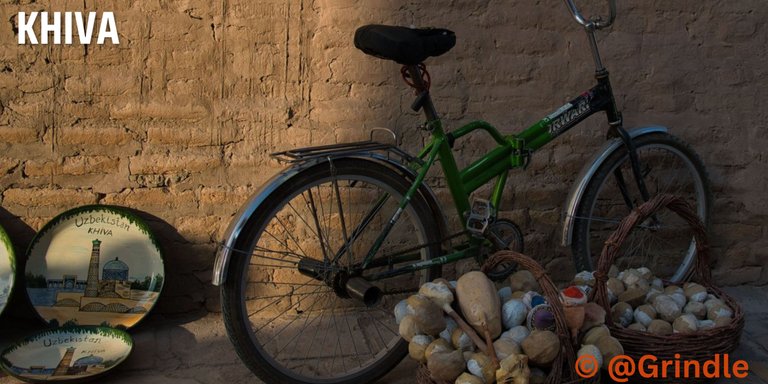
Itchan Kala, the historical part of Khiva
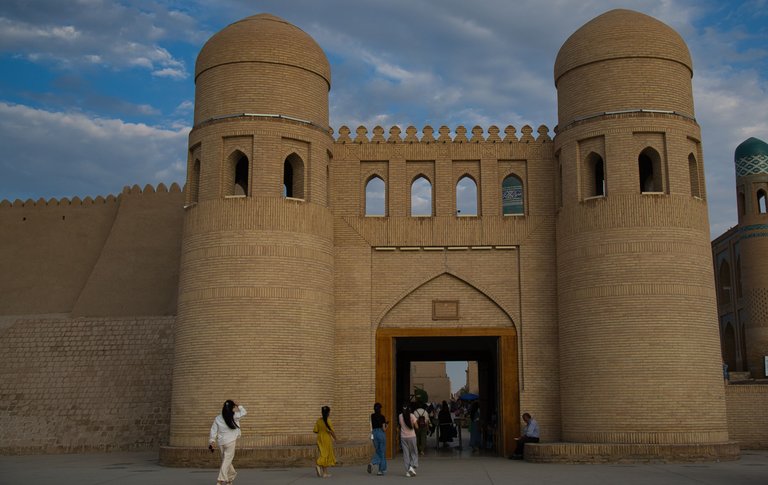
Let's wander through the west gate, it was only about 100 yds away from where we were staying for a couple of nights; the last stop on a momentous three weeks through The Stans.
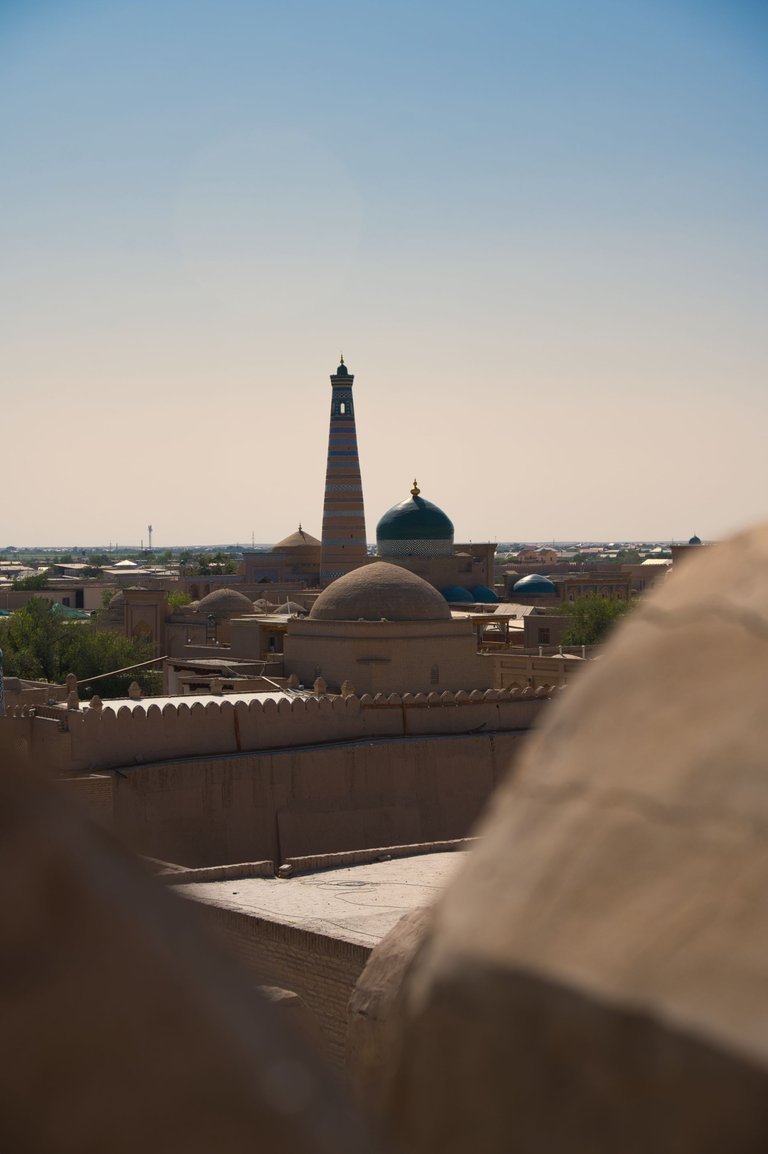
In the Central Asian deserts on the spot where Khiva now stands, there was once a very small nameless settlement, inhabited so legend goes by kind and friendly people it was an oasis with fresh clean water.
It drew in hundreds of merchant caravans laden with all manner of goods from the Orient, fine silks cloth, gold and spices en route to the continent of europe
Three strangers passed through the settlement travelling from Arabia, Tired hungry, and thirsty, they drank the water from the well.
"Khiva!", one of them exclaimed, which in Arabic means, "Oh, how tasty is the water!"
Soon many settlers camped around this well.and it became a great city.
The people of the city decided to name it Khiva, after the traveler’s exclamation. Lucky it didn’t translate as “fuck me that's good.”
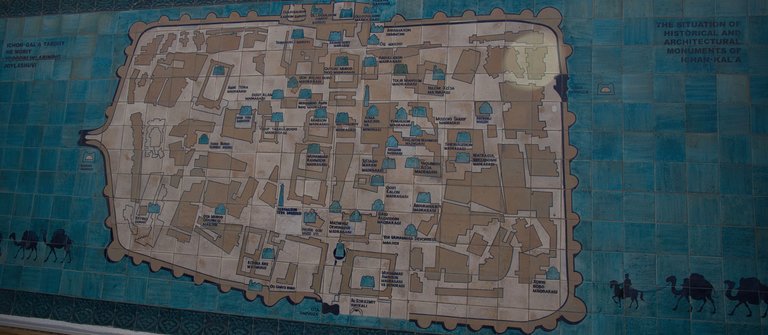
The Old Town of Khiva, known as the Itchan Kala has been a UNESCO world heritage site since the 1990's. Long long ago it was a stop on the Silk Road, the home of desert khans and a major centre of Islamic learning. It was also a major market for the buying and selling of slaves.
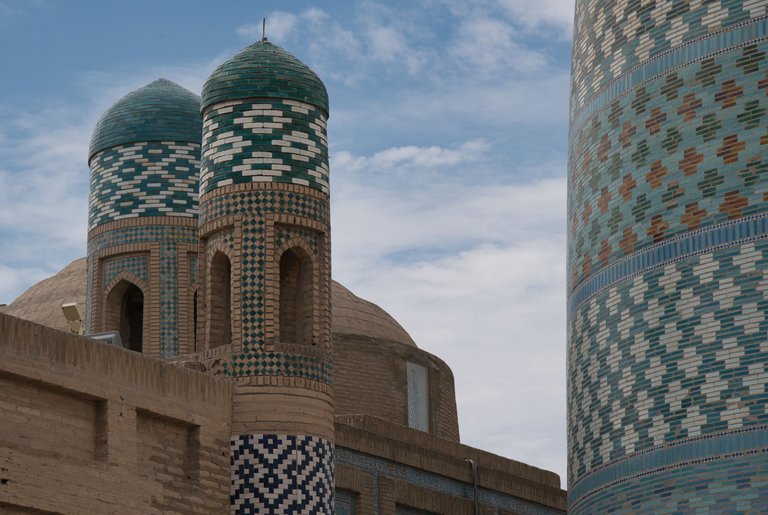
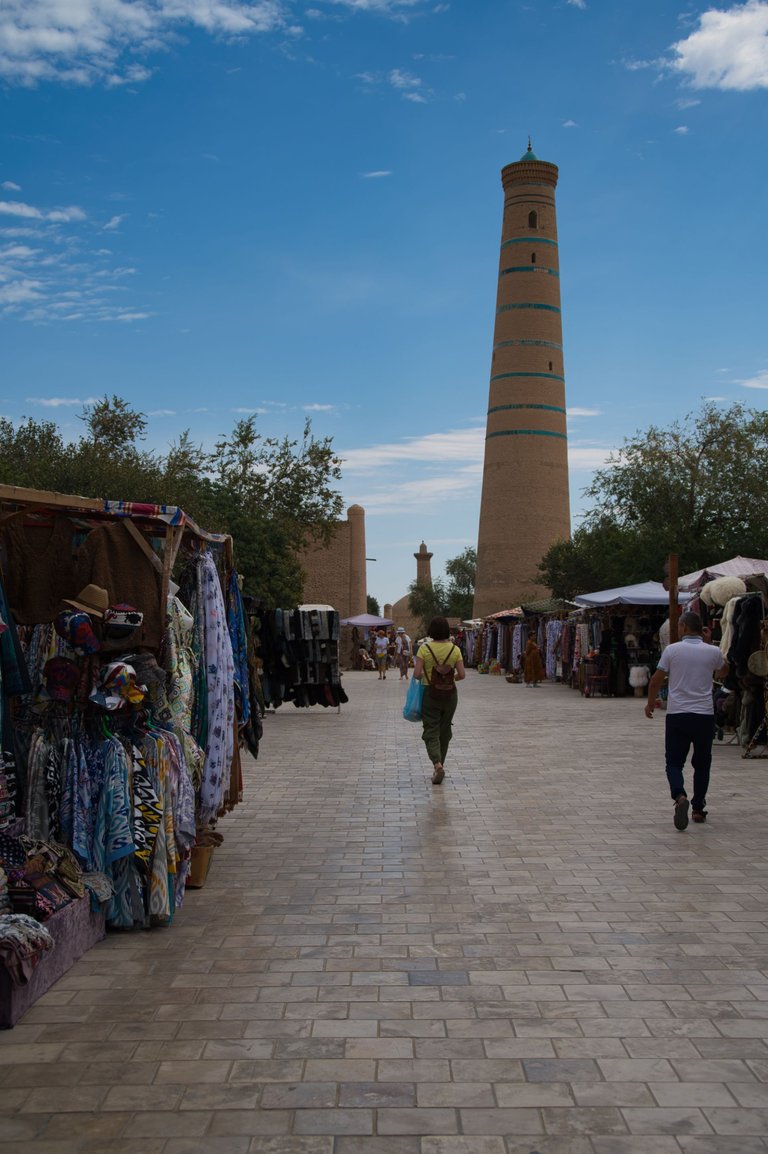
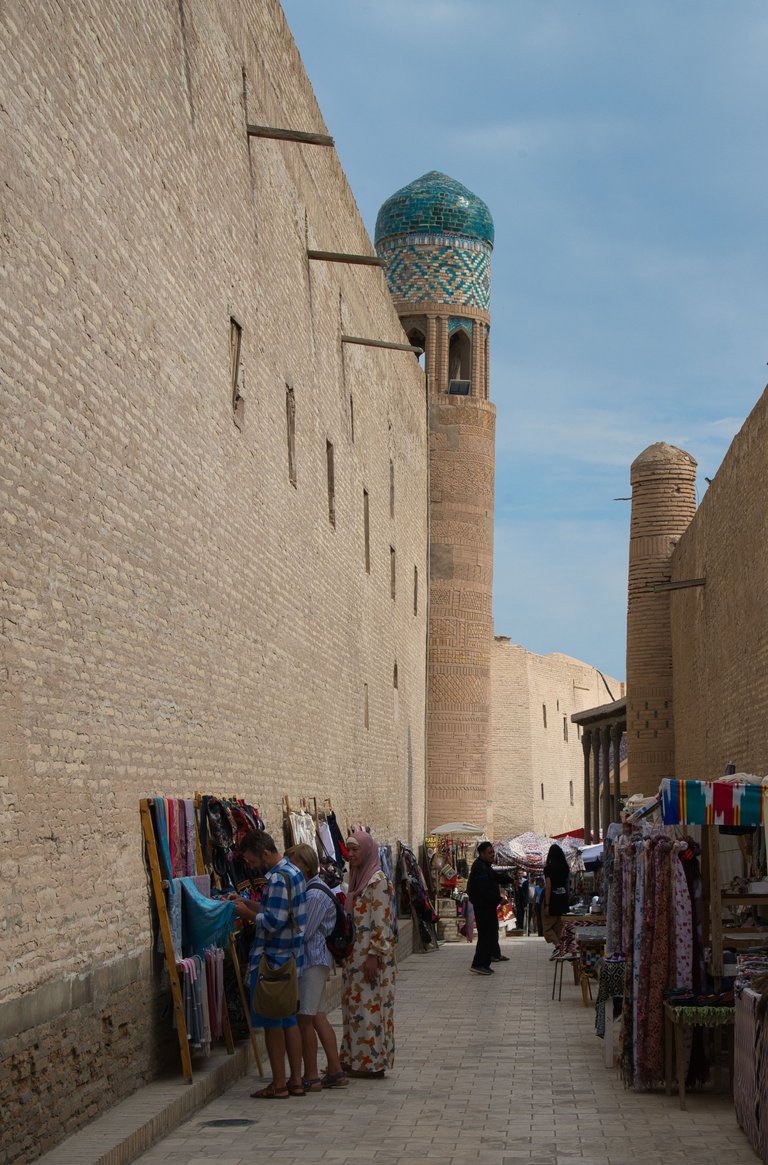
The labyrinthian streets and alley ways house many ancient monuments, mosques, madrasahs and homes, restored and repaired by the Soviets, a lot turned into museums bazaars and eateries. Every thing looks too neat and clean just one big sterile open air museum albeit a well restored one. Khiva has a dark dark past, an ancient city known more for its slave trading, and the ruling Khans who inflicted torture and executions, than its mosques and Madrasahs.

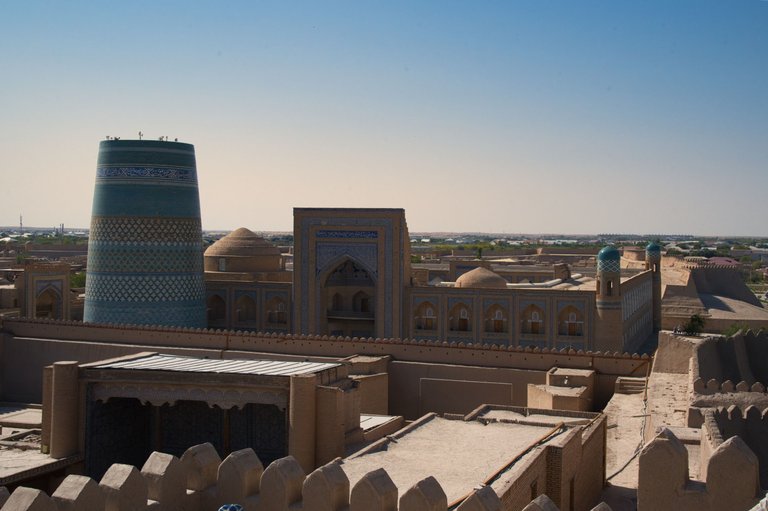
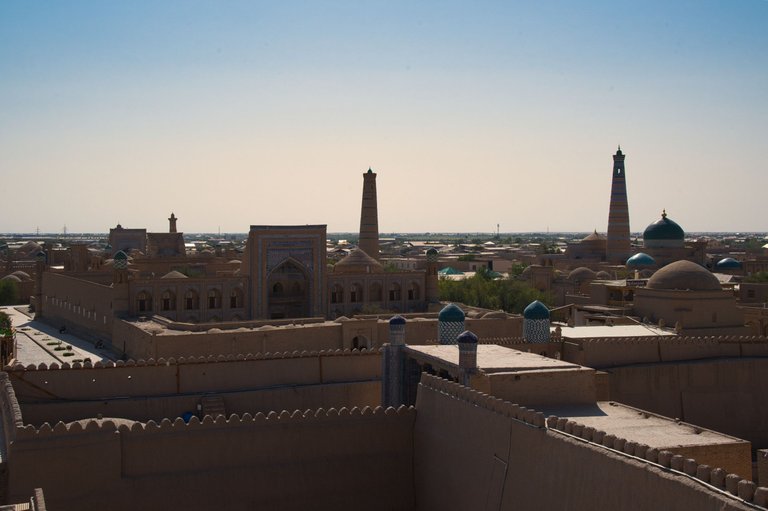
Between the 16th and 19th centuries Khiva was a major centre for the slave trade, there was a large slave market in the middle of the city.
A traveller in the early 19th century estimated there were 30,000 slaves for sale. 3,000 of which were Russian.
Russians, especially young and beautiful boys and girls,(queue paedophile alert) were highly prized. The Khan of Khiva kept the best ones for himself.
It was said that a good strong healthy Russian male was worth four camels. Russian men toiling in their fields, or whole families in their beds at night, no one was safe from the marauding gangs of Kazakhs and Turkmen
Kidnapped often from hundreds of miles from Khiva, the captives were bound together by their hands and marched to the slave maket.
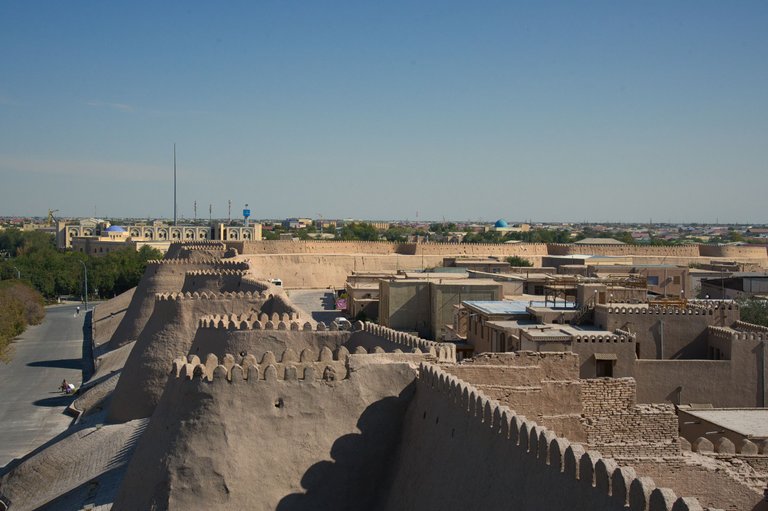
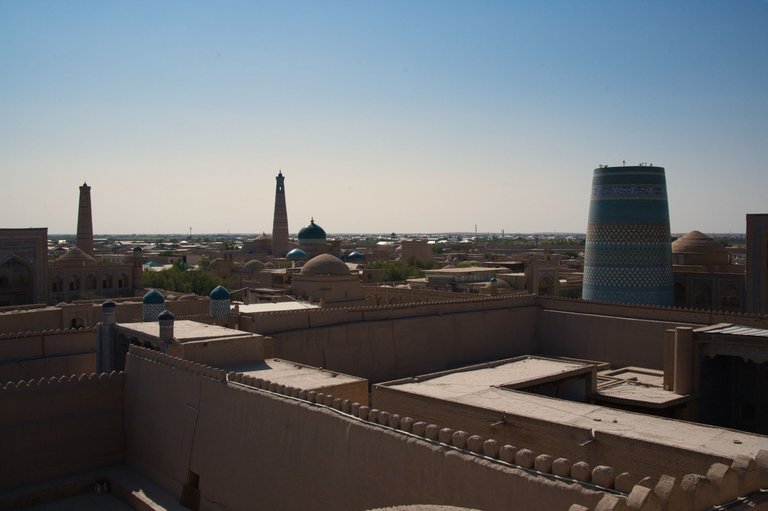
The khans were uneducated and very ignorant of the world, believing that it didn’t extend much further than Uzbekistan, and amongst other things that the English were a tribe from Russia.
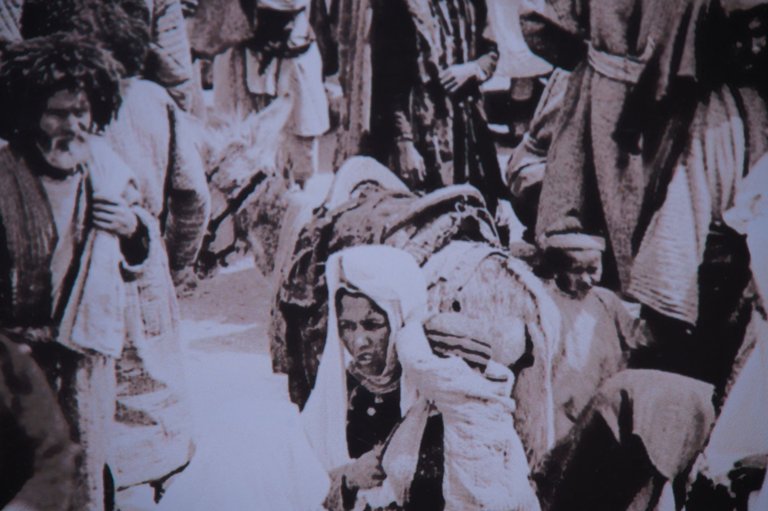
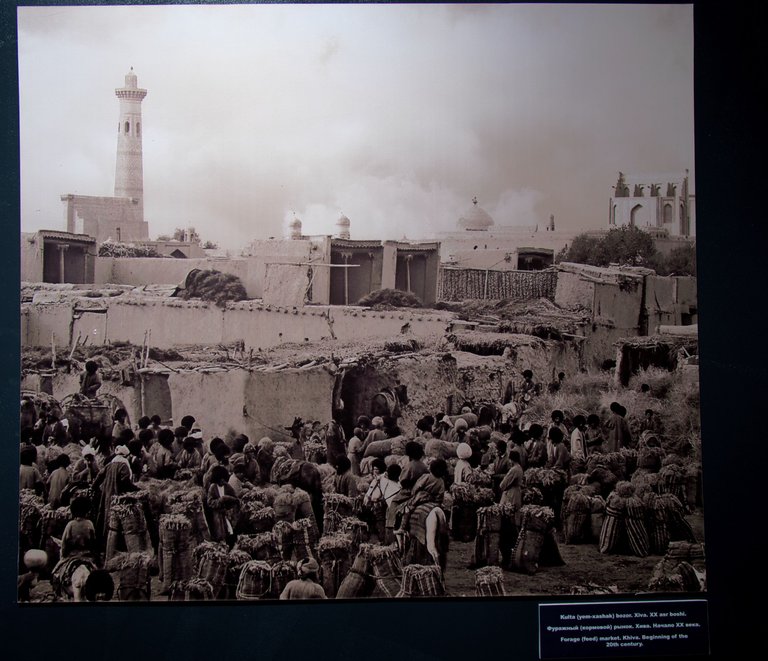
The Kanates who profited from the slave trade were notorious for their cruelty and their use of torture.
In 1863, Ármin Vámbéry a traveller and pseudo diplomat, whilst in Khiva observed eight men, lying on the ground, having their eyes gouged out by a torturer, He wrote
"Eight men lay down on their backs on the earth and the executioner gouged out their eyes in turn, kneeling to do so on the breasts of each poor wretch, and after every operation wiping his knife, dripping with blood, upon the white beard of the hoary unfortunate.”
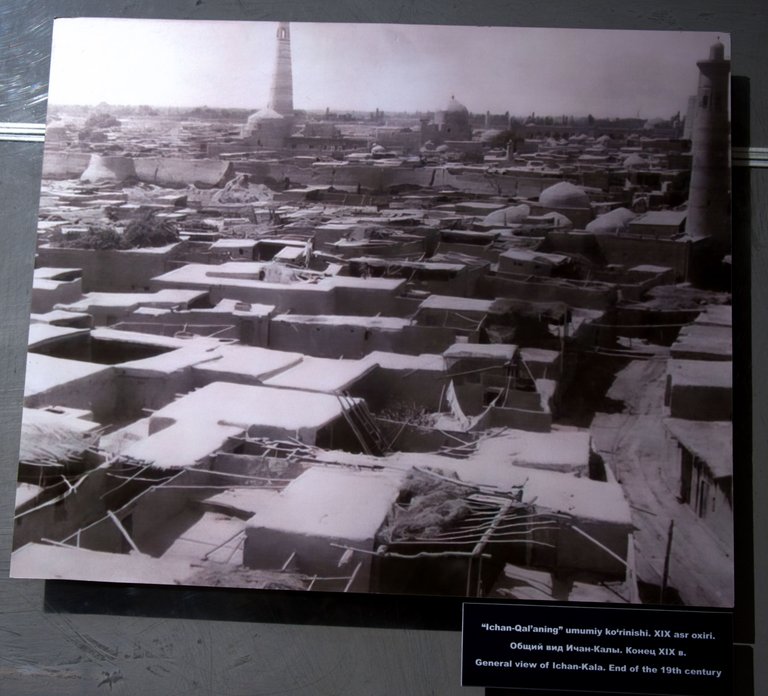
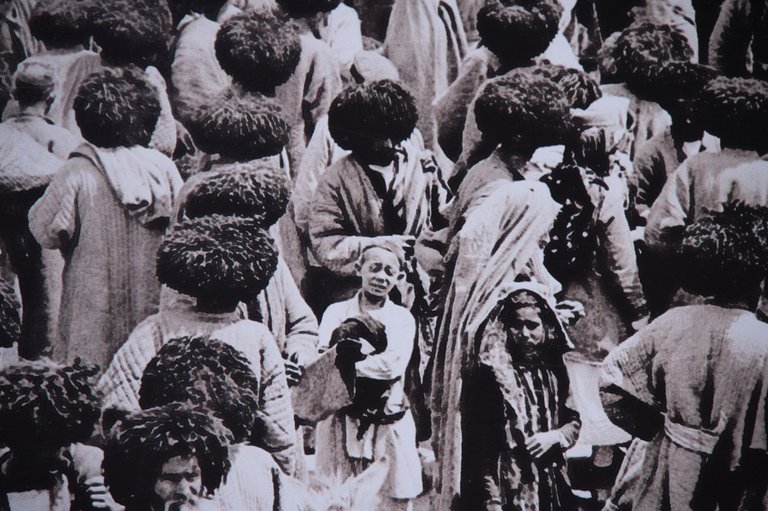
Those sentenced to death faired no better they did not die quickly, often impaled in such a manner that death took several days.
One khan decreed that anyone caught smoking or drinking alcohol would have their mouth slit so that they would be left with a permanent ear to ear gash for a mouth
Woe betide anyone caught flirting, looking for jiggy-jiggy. Vambery wrote: “To have cast a look upon a thickly-veiled lady, sufficed for the offender to be executed by the Redjm according as religion directs. The man is hung, and the woman is buried up to the breast in the earth near the gallows, and there stoned to death. As in Khiva there are no stones, they use hard balls of earth. At the third discharge, the poor victim is completely covered with dust, and the body, dripping with blood, and is horribly disfigured, death which ensues alone puts an end to her torture.”
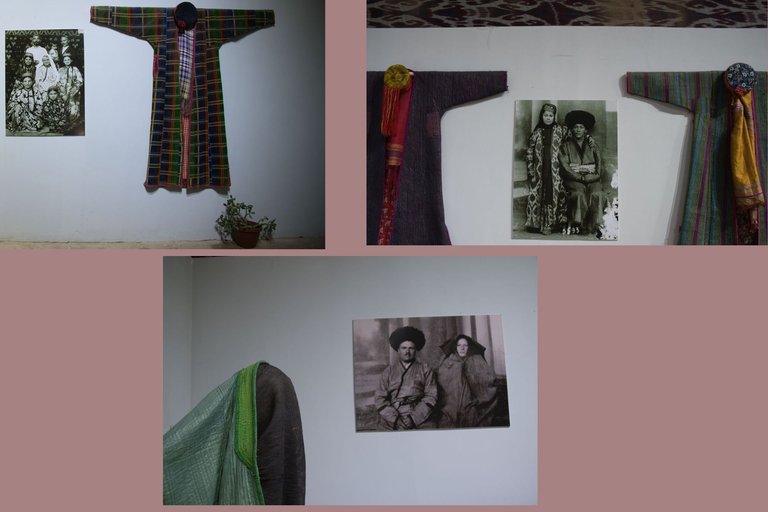
All vintage snaps used uncredited, and displayed in the Khorazm Applied Art museum

When is an ancient monument not an ancient monument?
When it is the Islam Khoja complex
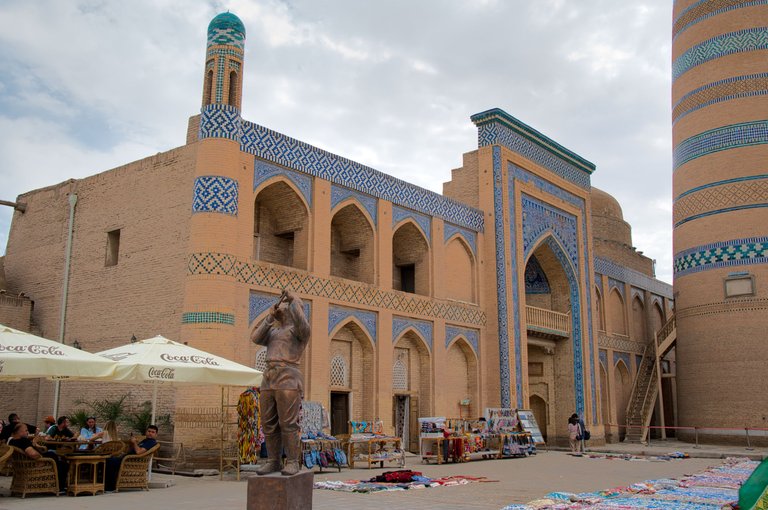
The construction of the Madrasah began in 1908 and was was completed by 1910, it was a centre for the teaching of science, now a museum of Khorazm Applied Art.It is attached to the Khoja Minaret
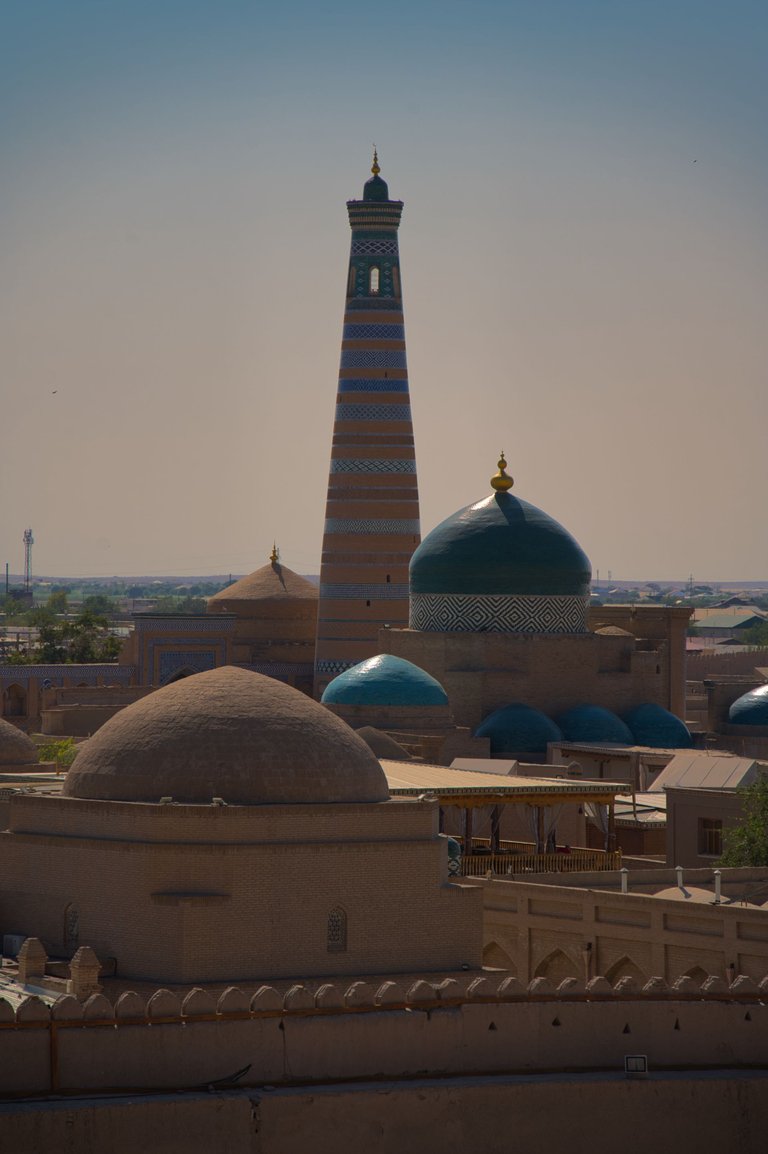
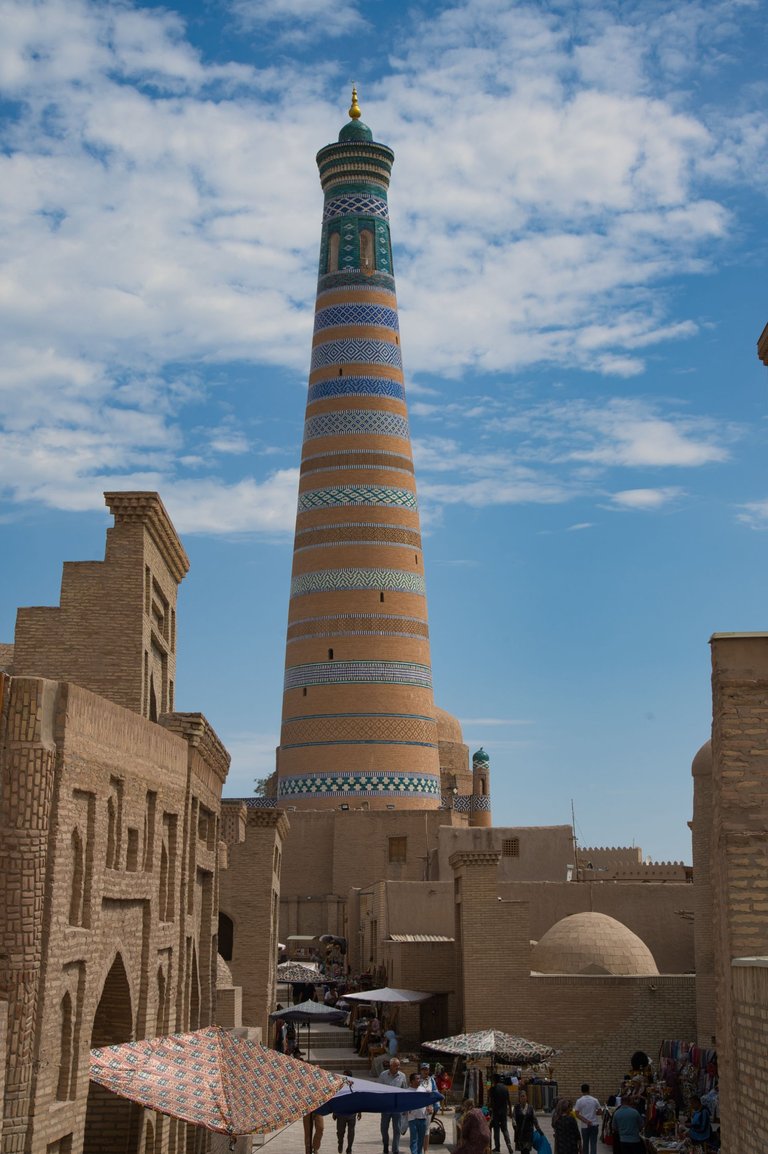
The Islam Khoja Minaret constructed as part of the complex in the early 20th century stands at a height of just under 190 ft is the second tallest in Central Asia, once used as an observation post and by the muezzin to call the faithful to prayer. It is, when it is open somewhere to view the city from above. It was closed.
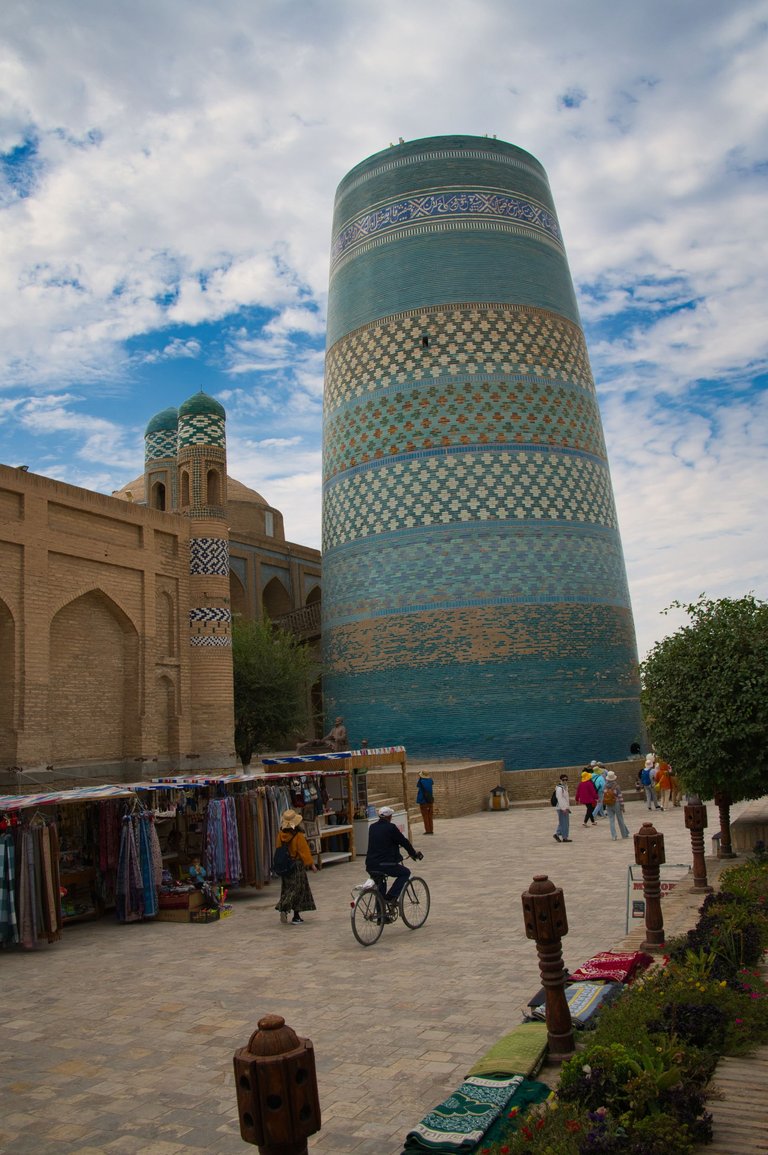
The Kalta Minor Minaret. When construction began in 1851, it was intended by the Khan that from the top he would be able so see Bukhara, 270 miles away. Good luck with that then.
Ooops! he popped his clogs in 1855, probably from all the exertion of having to do all that torturing and killing and kiddie fiddling with his young russian slaves. (The guide books say "sadly he died".... really?).
The structure was never completed, but nowadays it is seen as one of the most recognisable structures in Uzbekistan.
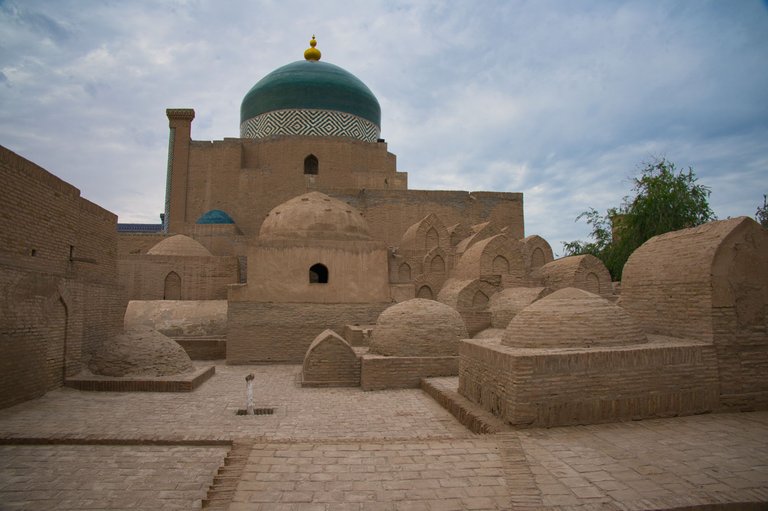
Pahlavan Mahmoud Mausoleum, with lesser mortals in lesser mausoleums
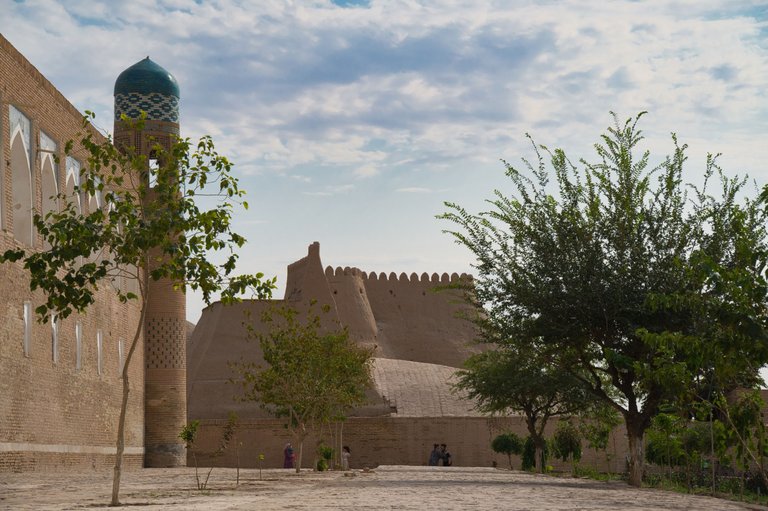
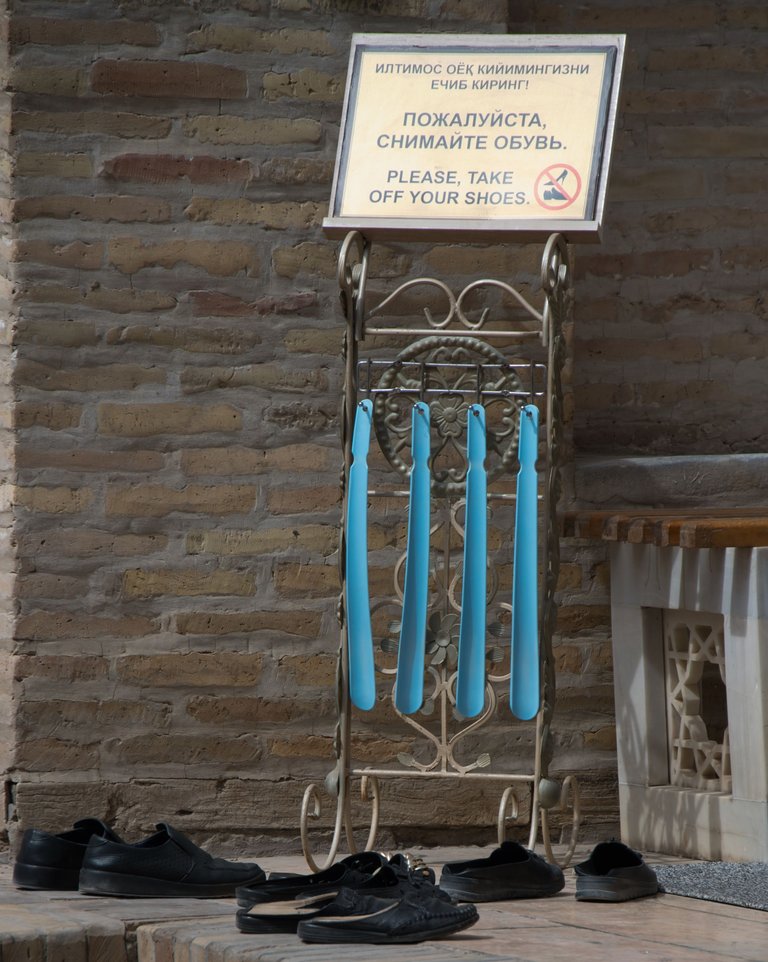
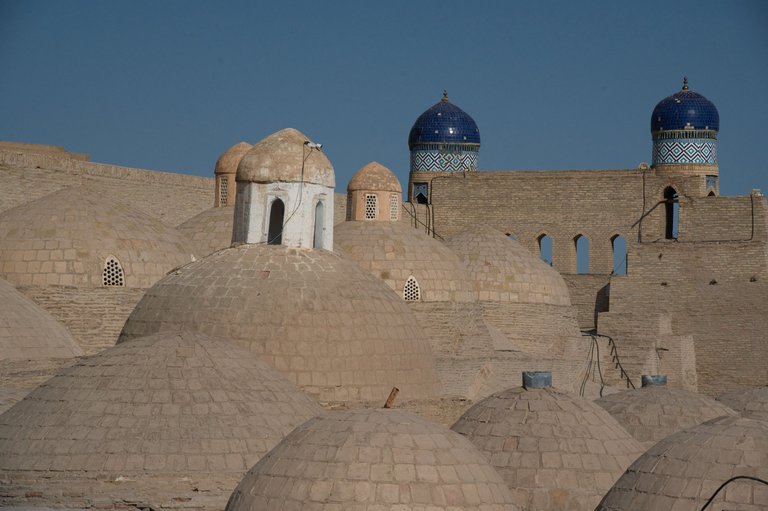
Unadorned un-named mausoleums of some lesser people, than the ruling elite. Those that curried favour no doubt.
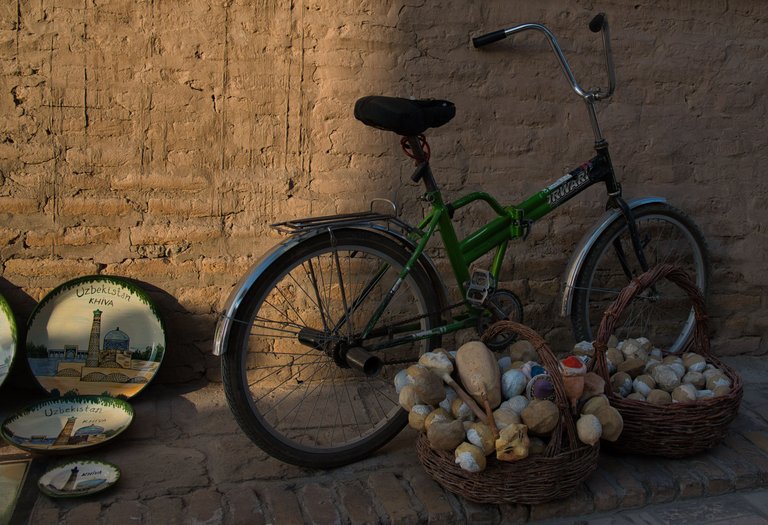
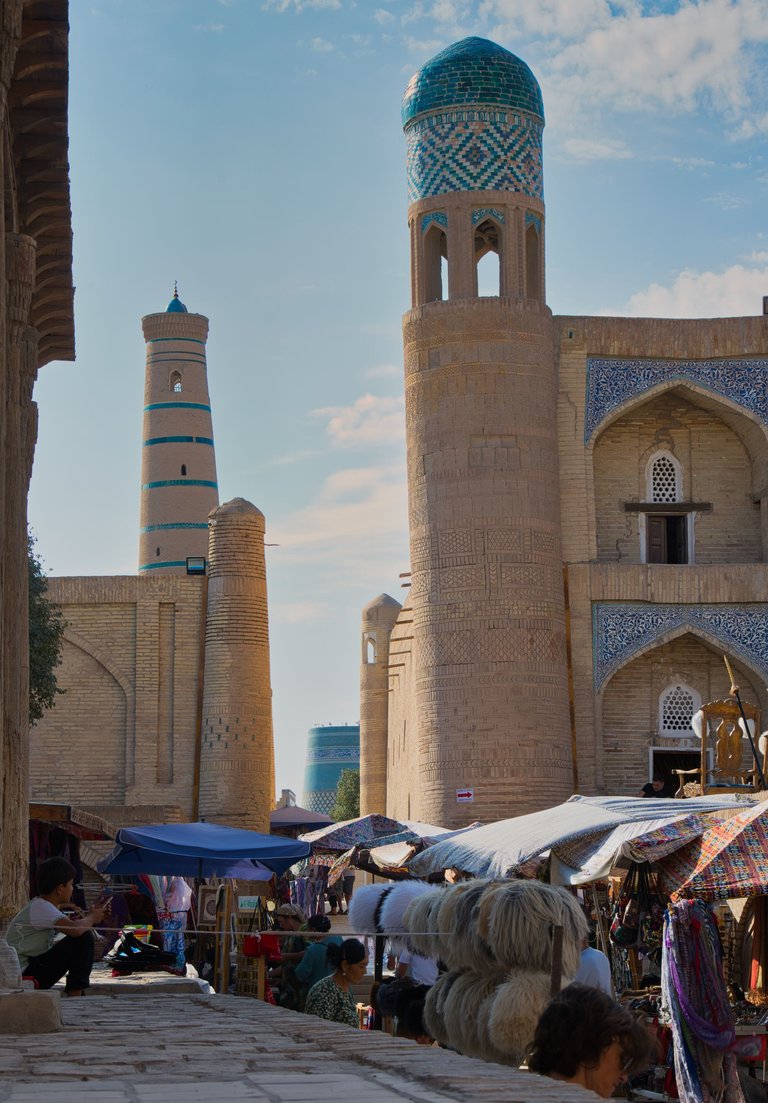
So as an open air museum come wander look and admire, but the guidebooks don't tell the real story. Khiva was once one of the most dangerous cities in the world for outsiders. The history is fascinating
My next two reads are:
The Great Game by Peter Hopkirk
The Lost Heart of Asia by Colin Thurbon.
Travel broadens the mind, you learn, you look beyond the surface.


https://worldmappin.com/@grindle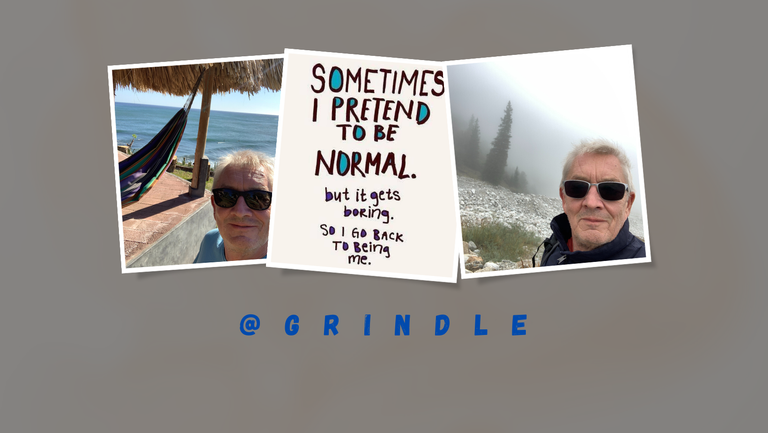


I love the architecture, the brick streets in the city and the cleanliness, although it does seem a bit austere. It never ceases to amaze me at the cruelty humans can inflict on others.
cheers @tamaralovelace , yes austere and sterile, I would have loved to have visited in the days of the mono pictures, but only if I was invisible, they do seem to be rather vicious
Wow, I really enjoyed your photos and insights. The architecture and markets remind me of a trip I took to Morocco.
cheers @giathebao thanks for dropping in, I appreciate your positive input, yes I agree it is similar to Morocco, another great place to visit
You can check out this post and your own profile on the map. Be part of the Worldmappin Community and join our Discord Channel to get in touch with other travelers, ask questions or just be updated on our latest features.
!pimp
Beneath the surface, many faced hardship yet history is twisted, or lost/buried over the years, this is not that long ago!
Humans are not kind, thoughtful or gracious to one another, most are fundamentally cruel, look at the broad picture.
Very informative photo story taking us through the town.
!BEER
Chers @joanstewart , always appreciate your positive thoughts, always spot on
View or trade
BEER.BEERHey @grindle, here is a little bit of from @joanstewart for you. Enjoy it!Learn how to earn FREE BEER each day by staking your
BEER.Travel Digest #2471.
Become part of our travel community:
- Join our Discord
Hiya, @ybanezkim26 here, just swinging by to let you know that this post made it into our Top 3 in Your post has been manually curated by the @worldmappin team. If you like what we're doing, please drop by to check out all the rest of today's great posts and consider supporting other authors like yourself and us so we can keep the project going!cheers @ybanezkim26 @worldmappin feeling the love, thans
Keep up the great work 💪
The structures are complex, the architects of these constructions are specialists...😀
Cheers @richardoswal thanks for dropping in, totally agree , true craftsmen
🤝
I don't think words should be wasted, with just one word (Khiva) they solved a whole sentence. 😁 I agree with what you said about that And so is the architecture of Khiva: synthesis... even in colour.
have a great weekendcheers @nanixxx always appreciate you dropping in, always positive thanks x
I wish it was great... hahaha... but the wisdom tooth has not received a good prognosis. I am very angry with myself. 😩
This is a fascinating and well-written blog post!You've done a great job of highlighting the hidden history of Khiva,which is often glossed over in guidebooks.I particularly appreciate your detailed account of the slave trade and the brutal treatment of the people under the Khan's rule.It's a stark reminder that even beautiful and historic places can have a dark past.I'm adding"The Great Game"and"The Lost Heart of Asia"to my reading list.Thanks for sharing your insights and experiences!
cheers @atemuz24
Beautiful architecture, I am just saddened to read about the dark past story of the place